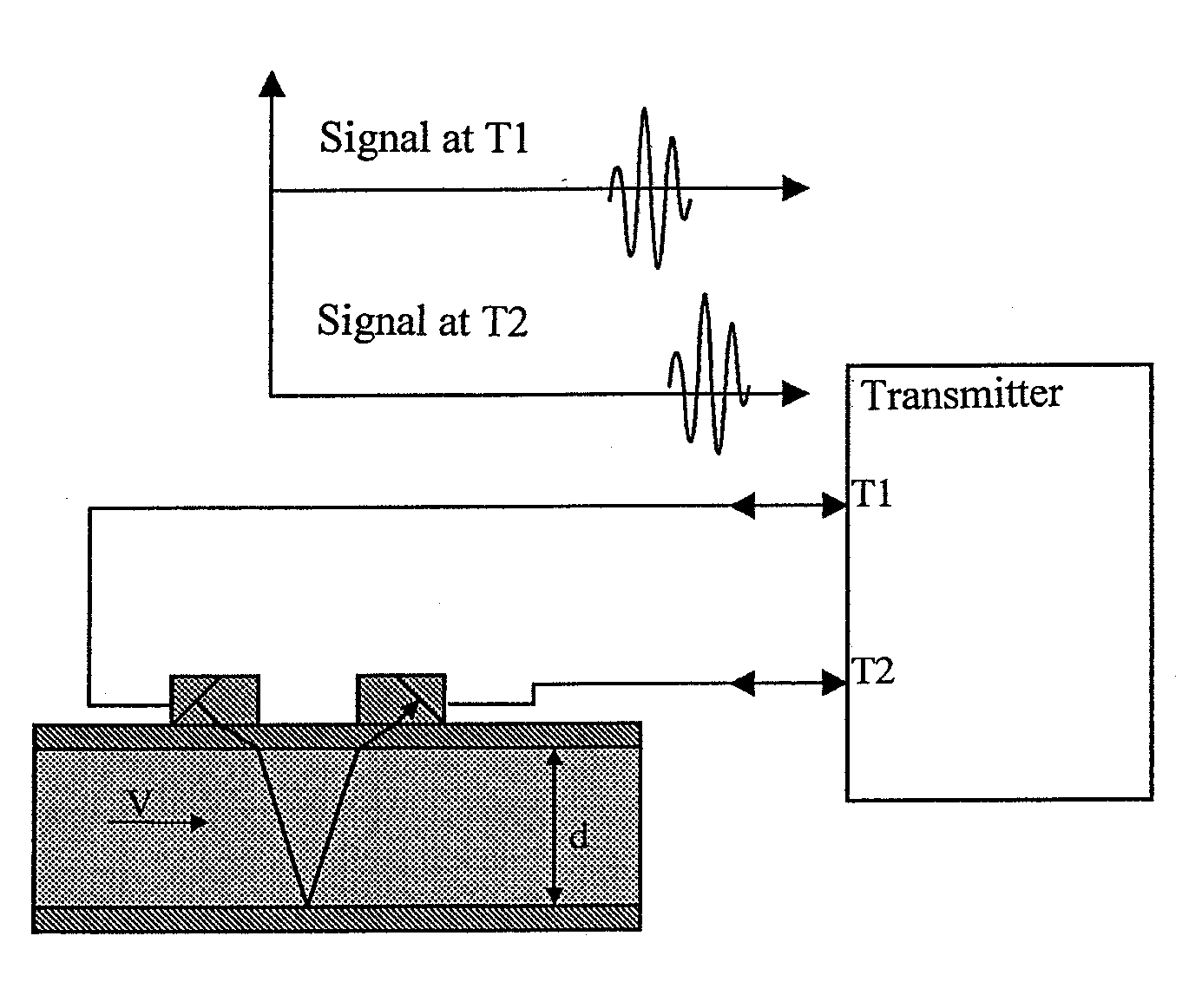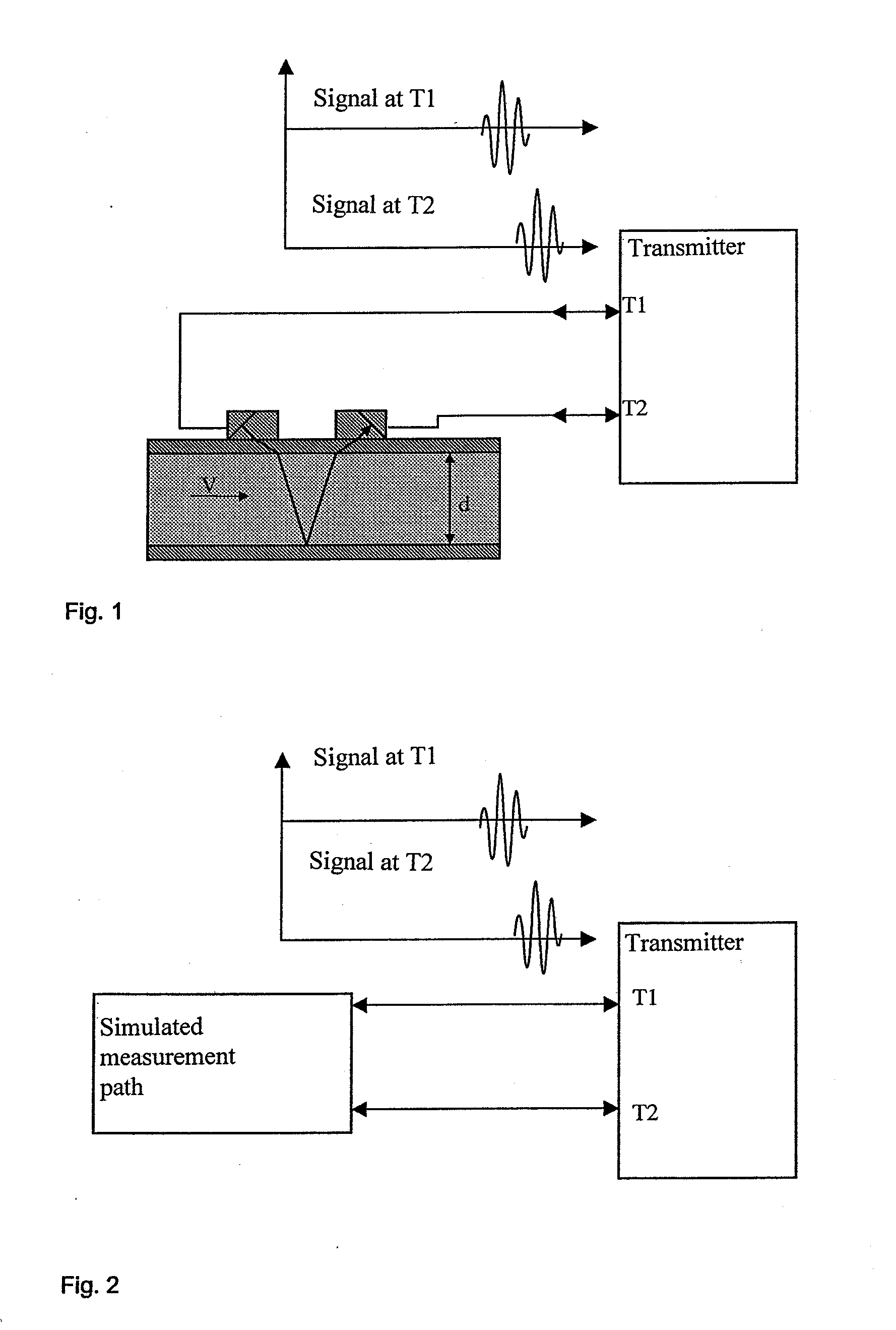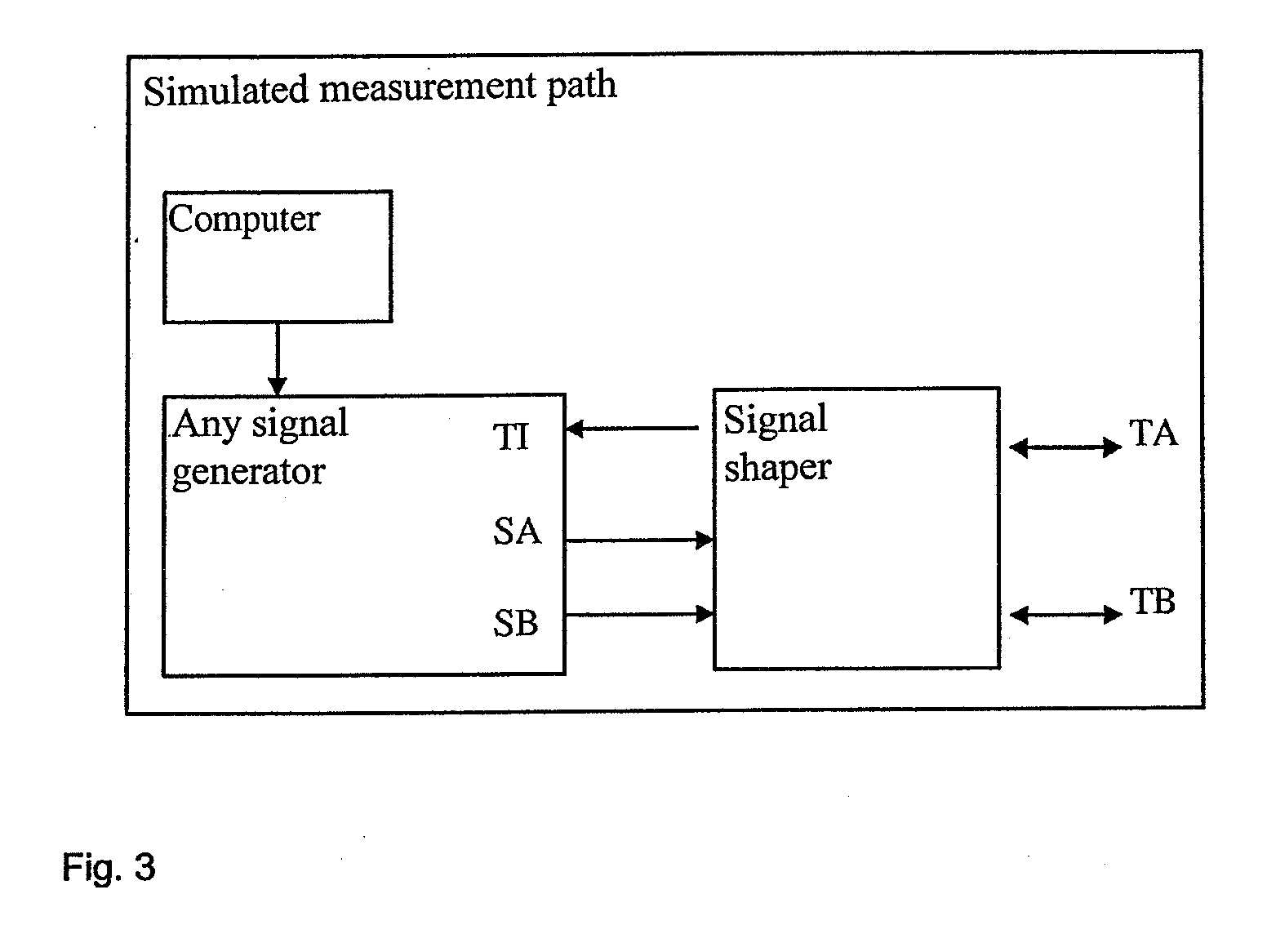Method and device for calibrating measuring transducers of ultrasonic flow meters
a technology transmitter, which is applied in the direction of testing/calibration of speed/acceleration/shock measurement device, liquid/fluent solid measurement, and volume/mass flow by differential pressure. it can solve the problems of measurement error of ultrasonic flow meter in transit time measurement or transit time difference measurement, and the signal shape of ultrasonic flow meter in both directions is emitted in both directions. the effect of cost reduction
- Summary
- Abstract
- Description
- Claims
- Application Information
AI Technical Summary
Benefits of technology
Problems solved by technology
Method used
Image
Examples
Embodiment Construction
[0029]An ultrasonic flow meter basically consists of a transmitter, the acoustic transducers and the pipe in which the fluid flow being measured occurs. The acoustic transducers are either installed in the tube or, in the case of the clamp-on flow meter, mounted on the outside of the tube. In the following, the unit consisting of the acoustic transducers and the pipe in which the fluid flow being measured occurs will be referred to as the measurement path.
[0030]The transmitter of an ultrasonic flow meter generates the signals for the acoustic transducers and amplifies the received signals for the subsequent signal processing, which also takes place in the transmitter and basically consists in determining the transit time and the transit time difference. Based on the measurement path model, which can, for example, be described with the equations (1)-(4), the transmitter determines the volumetric flow rate.
[0031]The factors KF, A and KT in the equation (4) are determined by the acoust...
PUM
 Login to View More
Login to View More Abstract
Description
Claims
Application Information
 Login to View More
Login to View More - R&D
- Intellectual Property
- Life Sciences
- Materials
- Tech Scout
- Unparalleled Data Quality
- Higher Quality Content
- 60% Fewer Hallucinations
Browse by: Latest US Patents, China's latest patents, Technical Efficacy Thesaurus, Application Domain, Technology Topic, Popular Technical Reports.
© 2025 PatSnap. All rights reserved.Legal|Privacy policy|Modern Slavery Act Transparency Statement|Sitemap|About US| Contact US: help@patsnap.com



